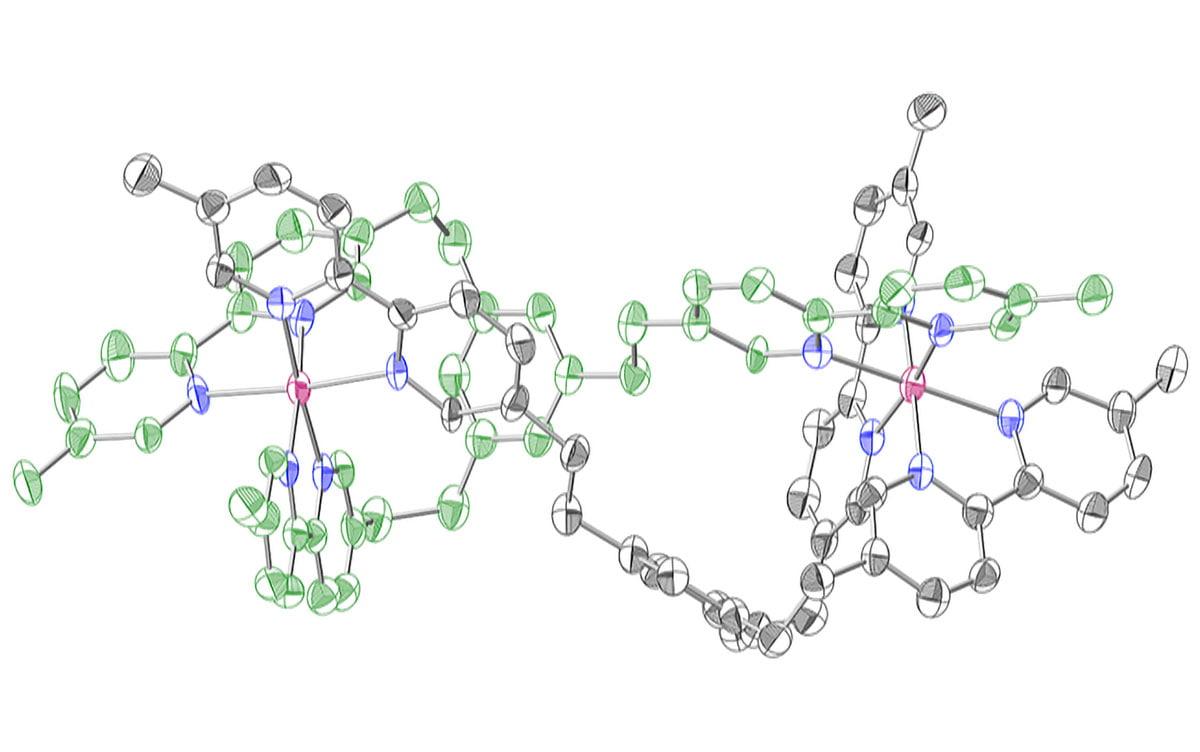Research News
Dinuclear Ruthenium Complex as a Photocatalyst for Selective CO2 Reduction to CO

A research team at the University of Tsukuba have developed a photocatalytic reduction process, using a dinuclear ruthenium (Ru) complex as a self-photosensitizing photocatalyst. Their innovative approach facilitates the highly selective conversion of carbon dioxide (CO2) into carbon monoxide (CO), even when the initial CO2 concentration in the gas phase is as low as 1.5%. Essentially, nearly all the introduced CO2 can be transformed into CO.
Tsukuba, Japan—Similar to the process of photosynthesis in plants, the conversion and storage of solar energy into chemical energy hold significant promise for addressing critical energy and environmental challenges, including the depletion of fossil fuels and threat of global warming. One promising avenue in this pursuit involves harnessing light energy to convert CO2 into value-added chemicals.
In this study, the researchers harnessed the potent photocatalytic properties of a ruthenium (Ru) dinuclear complex with self-photosensitizing capabilities to achieve a remarkably efficient CO2 reduction reaction. This process yields a remarkably high selectivity for carbon monoxide (CO). When a dimethylacetamide/H2O mixture containing the Ru dinuclear complex as a photocatalyst and a sacrificial reducing agent was exposed to light with a central wavelength of 450 nm in 1 atm CO2 atmosphere for 10 h, all the sacrificial reducing agent was consumed, and the substrate CO2 was converted into CO with a selectivity exceeding 99%. The maximum quantum yield at 450 nm was determined to be 19.7%. Furthermore, even when the initial CO2 concentration in the gas phase was reduced to 1.5%, the photocatalytic CO2 reduction by the Ru complex proceeded with remarkable efficiency, indicating that nearly all the introduced CO2 could be converted into CO.
In this newly developed Ru dinuclear complex, the two Ru complex moieties engage in photosensitization, enhancing the stability of the complex catalyst under reaction conditions. This enhanced stability is attributed to the extraordinarily strong chelating effect of the ligand employed. The researchers have future plans for further enhancing the catalytic activity to create a reaction system capable of efficiently driving the CO2 reduction process, even at a lower CO2 concentration equivalent to that of the Earth's atmosphere, which is approximately 420 ppm.
###
This work was supported by Grants-in-Aid (nos. 21K18973 and 21H01947) from the Japan Society of Promotion of Science (JSPS, MEXT) and a Grant-in-Aid for Transformative Research Areas (A) Green Catalysis Science for Renovating Transformation of Carbon-Based Resources (Green Catalysis Science) (JSPS KAKENHI grant no. JP23H04902).
Original Paper
- Title of original paper:
- Self-Photosensitizing Dinuclear Ruthenium Catalyst for CO2 Reduction to CO
- Journal:
- Journal of the American Chemical Society
- DOI:
- 10.1021/jacs.3c07685
Correspondence
Professor KOJIMA Takahiko
Department of Chemistry, Institute of Pure and Applied Sciences, University of Tsukuba
Related Link
Institute of Pure and Applied Sciences





